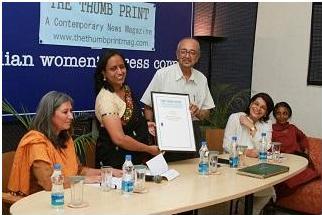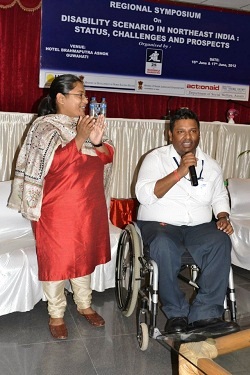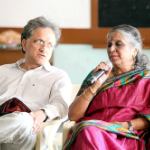A number of high-profile rapes have shaken India in the last few months. The frequency of the incidents is worrying.
On Monday, the Supreme Court of India asked, “What is wrong with the system? Why are 90 per cent of rape cases ending in acquittals?”
A bench comprising justices RM Lodha and Madan B Lokur observed that the situation is going from bad to worse. “Why is it (rape) happening again and again? That too, more so in metropolitan cities?” the bench asked while hearing the petition of the father of a rape victim from Haryana.
Last November saw what was arguably the first of the current spate of rapes in the Indian metros, when a Spanish girl was raped in the posh Mumbai suburb of Bandra. A month later, the horrific Delhi gang rape shook the country.
That month, going only by cases that made the national news, there were three incidents on just one day, December 5, which were barely noticed. In Amritsar, an Akali MLA and his accomplices shot dead a policeman because he objected to their harassing his daughter. In Bangalore, a woman playwright was groped, harassed and slapped because she demanded punishment against a biker who hit her car from behind. In Bombay, a boy of 19 was stabbed to death by a group of younger boys because he tried to stop them from harassing a girl.
The terrifying lack of justice has been staring us in the face for years, but most people didn’t seem to see it until the Delhi gang rape. People were shortsighted; they saw proximate causes of problems, and clamored for easy fixes. So, for example, when Manu Sharma shot dead Jessica Lal, they marched to ask for his arrest. When terror attacks started to hit our cities, they called for hanging the occasional terrorist who was caught and convicted. When corruption began to pinch, they screamed for a Lokpal Bill. When rape crossed some invisible and inexplicable threshold of tolerance, they began calling for hanging the rapists. It is not as if rapes hadn’t been happening all this while.
Stop the kneejerk
The knee jerk reaction is no use. Imagine a body that has chicken pox rashes breaking out all over. Every time one pox rash breaks out, some folks say put ointment on it, some others say put a pin through it, somebody else says something else. It’s all pointless, since the disease is internal, and the whole body is sick. India’s situation appears to be like that. The whole country is sick, and rashes are breaking out all over. Applying ointment or putting a pin through the rash is no solution. Entire systems have become rotten to the core, and need to be fixed from the inside out. From the Jessica Lal case to terror cases to corruption to rape, the two systems implicated in every instance are the police and the courts. They have to be fixed from the district level up, so that justice is available easily, quickly and cheaply to every Indian citizen. Fast tracking certain cases is the usual Indian response of VIP culture. It is not a systemic solution. It only creates a new ‘VIP caste’, while the rest languish.
What we have now, because of our frightening police and courts, is a situation where honest people are so afraid of getting dragged into police and court matters that they don’t even stop to help victims of road accidents. This happened with the Delhi rape victim too: she was lying on the side of the road where she and her friend had been thrown out of the bus, until the police reached. Meanwhile people drove past, but no one stopped.
Mobs everywhere
The absence of justice is sapping us of our humanity. It is leading to public fear on one hand, and mob justice on the other. Different groups with their own ideas of what is right and what is wrong are trying to dispense their own justice. Khap panchayats in Haryana have one idea, the Ram Sene in Mangalore has another, the chap who slapped Sharad Pawar may have a third, the one who slapped Prashant Bhushan may have a fourth. And so on. This is dangerous for India.
Even the police, brutalized as it is, has become a mob. Across the country, policemen are known to routinely extort money. They ‘solve’ land disputes, and sometimes kill gangsters or alleged terrorists in ‘encounters’. In doing so they insult the most fundamental of all fundamental rights guaranteed by the Indian constitution – the right to life and liberty. Article 21 of the Constitution states that “no person shall be deprived of his life or personal liberty except according to procedure established by law”. Wrongful arrests and imprisonment, to say nothing of fake encounters, are in contravention of this. The situation is worst in those parts of India where the Armed Forces Special Powers Act is in force, because it effectively denies citizens their rights to life and liberty.
Some people think there is no other solution than to turn the police into a mafia squad; actually, the solution is very straightforward. The police should honestly and efficiently do what they are required, by our Constitution, to do. Otherwise the police lose their moral authority, and the Constitution loses its sanctity. This leads to situations where citizens lose respect for the police and security forces and even the country.
Ask any average person on the street anywhere in India what they think of the police; the first word they will come out with is probably ‘chor’, which means thief. The moral right of the police to discipline people is eroded when they become extortionists. This is a dangerous situation, because those who can overpower the police will feel absolutely no hesitation in doing so. That is starting to happen. There are random incidents of attacks on the police that are being reported as brief items in daily newspapers. Hearing a Public Interest Litigation suit on safety of women on December 13, the Bombay High Court observed that, “Something is seriously wrong somewhere. There was a time when the presence of a single constable was enough to deter crime. Now nobody is afraid.” The bus on which the rape in Delhi occurred passed through five police barricades. The rapists carried on with what they were doing.
Of Eros and Demos
The state exists because it promises certain things. It’s a deal: we pay taxes and submit to certain rules, in exchange for security and justice, among other things. The state, corrupted through and through, is failing to keep its end of the deal. Its monopoly on violence is being challenged. Khaps, the Ram Sena and mobs of all sorts see themselves as moral forces, which is why they are often called ‘moral police’. They represent a challenge to the real police. In more extreme situations, the absence of justice gives space to Maoism. The legitimacy of the state itself comes into question.
It is curious that all the moral police brigades have been involved in crimes against women they see as immoral. Back in 2002, Professors Pippa Norris of Harvard University and Ronald Inglehart of the University of Michigan in USA published a study testing Samuel Huntington’s famous ‘clash of civilizations’ hypothesis. This is a brief extract of what they had to say: “Comparative analysis of the beliefs and values of Islamic and non-Islamic publics in 75 societies around the globe, confirms the first claim in Huntington’s thesis: culture does matter, and indeed matters a lot, so that religious legacies leave a distinct imprint on contemporary values.
But Huntington is mistaken in assuming that the core clash between the West and Islamic worlds concerns democracy…Moreover the Huntington thesis fails to identify the most basic cultural fault line between the West and Islam, which concerns the issues of gender equality and sexual liberalization. The cultural gulf separating Islam from the West involves Eros far more than Demos.” Inglehart and Norris had focused on Islamic countries, but as I wrote in an article in the Hindustan Times several years ago, on issues of gender equality and sexual liberalization, all conservatives in India, whether Hindu, Muslim, Sikh or Christian, actually hold very similar attitudes. The clash between all of them and the ‘West’ is also over Eros.
A painful transition
Why should whole communities get so worked up over who wears what, or who sleeps with whom? I suspect the answer may lie in modern social history. While human living has changed dramatically in the past 125 years because of sudden advances in technology, human societies haven’t adapted sufficiently, because society’s moral codes are contained in religion and tradition, which are resistant to change. Key inventions in this context are the condom and the pill. The biological need to avoid sex has disappeared. The social need, especially in traditional societies, has not. Modern Western and Communist societies have largely relegated religion and traditions to the sidelines. Those societies are therefore better adapted for modern living. In more religious societies, modern living comes into conflict with inherited mores and morals. In such places, the West, equated with modernity, is seen as immoral and sexually promiscuous.
Conservatives see the woman who does not dress conservatively as ‘loose’, and therefore asking for it. The standards vary from Saudi Arabia to India, but this is the broad conservative consensus: women should cover up, should not associate with men who are not their relatives, should not have relationships before or outside marriage. As many people have pointed out, all this does not guarantee that the woman will be safe from harassment. Women dressed in saris and churidars are raped too. In Egypt, women in burqas routinely report molestation.
Evolutionary biology could provide a clue as to why. In brief, it is because we are still carrying our animal selves encoded in our genes. We invented civilization, but that is an artificial construct. The animal still survives beneath. Men are required by both nature and nurture to be the more aggressive in matters of love and sex. This is a natural tendency, which is reinforced by a cultural code across societies, that says the man must pursue the woman and make the move. Failure to do so guarantees failure for the man in competitions for love. Who dares, wins. So the man must do the chasing. When he does it right, and reads the signs well, it’s called wooing. When he does it badly, or reads the signs wrong, it’s called harassment.
Unfortunately, many young men in this country lack the social skills to woo a girl. They can do no better than gathering in groups and passing lewd comments. Rape is further down the same road from harassment. It’s harassment carried to its furthest extreme. Though rape statistics are dodgy, it is clear that it happens in significant numbers around the world. The US, South Africa and India are among countries that report high numbers.
Not just about police
The fact that the US is in this list means that good policing may make things better in some measure, but it won’t end the menace. The US has much better policing than India, but it has the highest rape figures in the world. There’s little that is common to the US, South Africa and India. The existence of groups of economically and socially marginalized men who have little respect in society is one common feature. The existence of cultures of machismo is another. A relative weakening of religion is a third. Lumpen, macho men fighting their own feelings of powerlessness and meaninglessness in life tend to behave in dangerous ways. If they find power and meaning through religion, it would probably be via the militant brand. Ajmal Kasab, the Mumbai terrorist, was an example. If god doesn’t provide meaning, it’s down to the ‘good things in life’ as advertised by capitalism to make life meaningful. The same demographic then turns to crime. Of course there are psychopaths in all social classes, of whom rich brats like Manu Sharma are examples. The tendency common to the rich brat and the poor criminal is that both have no concern for other people and will stop at nothing to get what they want.
Everyone’s talked about the rape that night in Delhi. What struck me most was the sequence of events. The story as reported goes like this. A group of youngish men, all poorly employed, have an evening off. One of them is a bus driver, and they decide to go for a joyride. They drink some alcohol. Then they start to have fun. And what is it they do for fun? They pick a fight with a trucker who overtook their bus. They pick up a poor man, beat him up, and rob him. Then they pick up the couple, start a fight with them, beat up the guy and then rape the girl. They don’t stop at rape and sodomy. They also pushed iron rods into her body, injuring her critically. This is what they did for fun?!
This time in Mumbai, it is again a group of young men, all poorly employed. After raping the girl, they calmly went home and carried on like nothing had happened. The next morning, two of them went to watch Dilwale Dulhaniya Le Jayenge. By all accounts, none of them expected the victim to complain. They had been careful to return her iphone and other belongings, though they were petty thieves, and it seems they expected that the rape would not drive the girl to the police since they had not robbed her.
Harsh punishment is probably necessary to drive home the message that rape is not ok. We must strengthen the police and fix the court system to enable prosecution. But that’s not enough. The roots of this problem go deeper. They go into conservative cultures, corrupt political parties and inequitable economic systems. We must address those too.







































